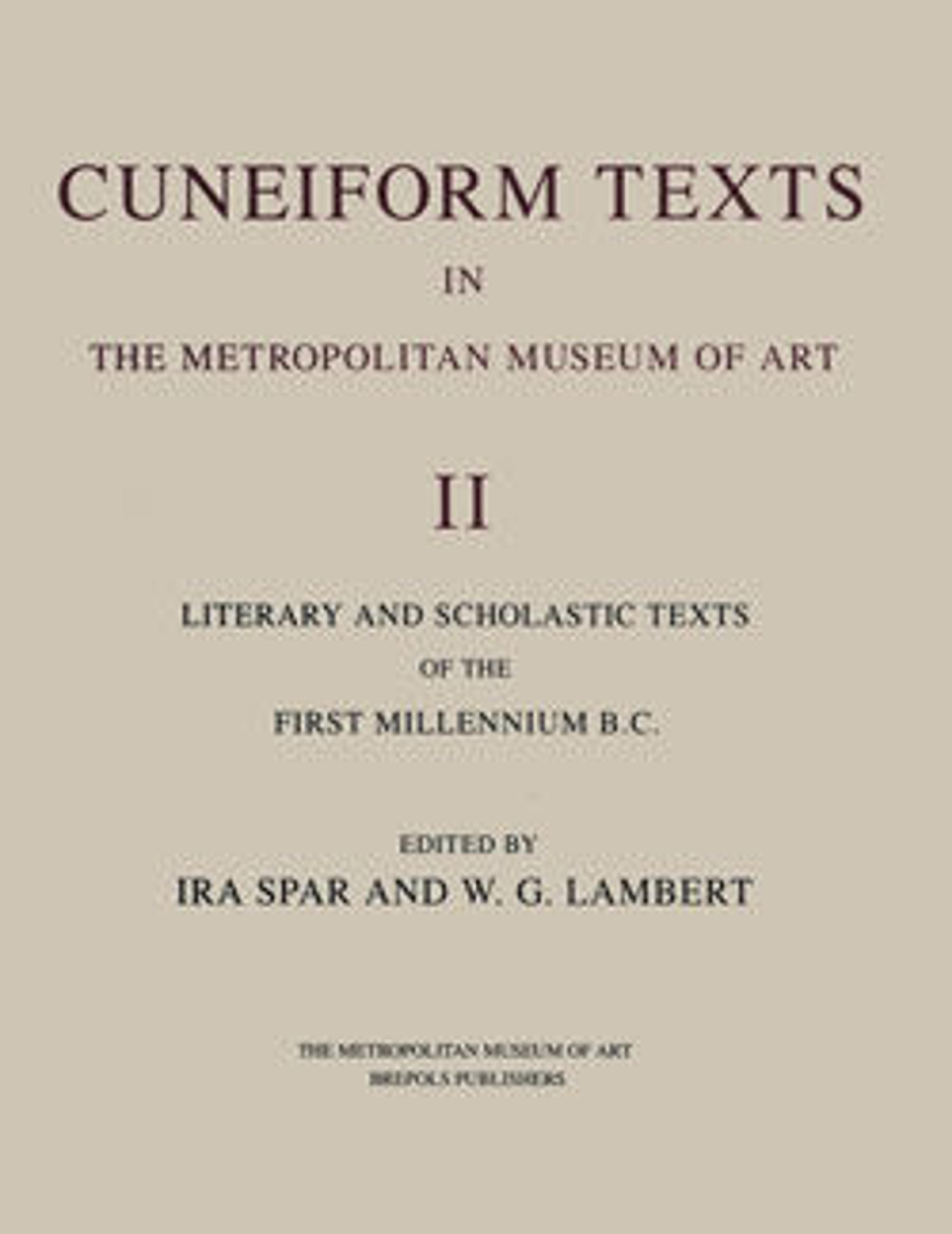Cuneiform tablet: Atra-hasis, Babylonian flood myth
The invention of writing in approximately 3300 B.C. was one of many developments in administrative technology--including the use of geometric tokens for counting and cylinder seals to guarantee transactions--that accompanied the growth of the first cities and states in southern Mesopotamia. Proto-cuneiform is the name given to the earliest form of writing--pictograms that were drawn on clay tablets. Gradually, the pictograms became abstracted into cuneiform (Latin, "wedge-shaped") signs that were impressed rather than drawn. At its greatest extent, cuneiform writing was used from the Mediterranean coast of Syria to western Iran and from Hittite Anatolia to southern Mesopotamia. It was adapted to write at least fifteen different languages. The last dated cuneiform text has a date corresponding to A.D. 75, although the script probably continued in use over the next two centuries.
This clay tablets fragment contains part of the ancient Akkadian flood story, often called Atra-hasis. The epic tells of how the gods created humans to alleviate their own work, grew tired of the noise of the peoples on earth, and sent various natural disasters – including a flood – to destroy the human race. Because the story describes the intervention of a god to save one man (Atra-hasis) by giving him instruction for building a boat, it is often compared to the biblical story of Noah. The text on this tablet, which reads left to right, describes the noise on earth that led to the gods’ decision to destroy humanity on the front. On the reverse, the very end of the story appears – the gods promise to never send another flood, allowing people to "last forever" – as well as the name of the Mesopotamian flood survivor, who in this text is given the name Ut-napishtim. The epic is best-known from copies of the text dating to the Old Babylonian period, but several examples, including this text, show that the story continued to be copied in later periods.
This clay tablets fragment contains part of the ancient Akkadian flood story, often called Atra-hasis. The epic tells of how the gods created humans to alleviate their own work, grew tired of the noise of the peoples on earth, and sent various natural disasters – including a flood – to destroy the human race. Because the story describes the intervention of a god to save one man (Atra-hasis) by giving him instruction for building a boat, it is often compared to the biblical story of Noah. The text on this tablet, which reads left to right, describes the noise on earth that led to the gods’ decision to destroy humanity on the front. On the reverse, the very end of the story appears – the gods promise to never send another flood, allowing people to "last forever" – as well as the name of the Mesopotamian flood survivor, who in this text is given the name Ut-napishtim. The epic is best-known from copies of the text dating to the Old Babylonian period, but several examples, including this text, show that the story continued to be copied in later periods.
Artwork Details
- Title: Cuneiform tablet: Atra-hasis, Babylonian flood myth
- Period: Neo-Babylonian or Achaemenid
- Date: ca. 7th–6th century BCE
- Geography: Mesopotamia
- Culture: Babylonian or Achaemenid
- Medium: Clay
- Dimensions: 2.5 x 2.25 x 1 in. (6.35 x 5.72 x 2.54 cm)
- Credit Line: Purchase, 1886
- Object Number: 86.11.378a
- Curatorial Department: Ancient West Asian Art
More Artwork
Research Resources
The Met provides unparalleled resources for research and welcomes an international community of students and scholars. The Met's Open Access API is where creators and researchers can connect to the The Met collection. Open Access data and public domain images are available for unrestricted commercial and noncommercial use without permission or fee.
To request images under copyright and other restrictions, please use this Image Request form.
Feedback
We continue to research and examine historical and cultural context for objects in The Met collection. If you have comments or questions about this object record, please complete and submit this form. The Museum looks forward to receiving your comments.
